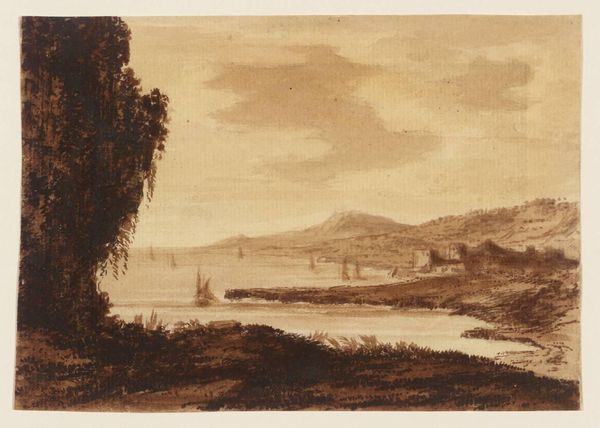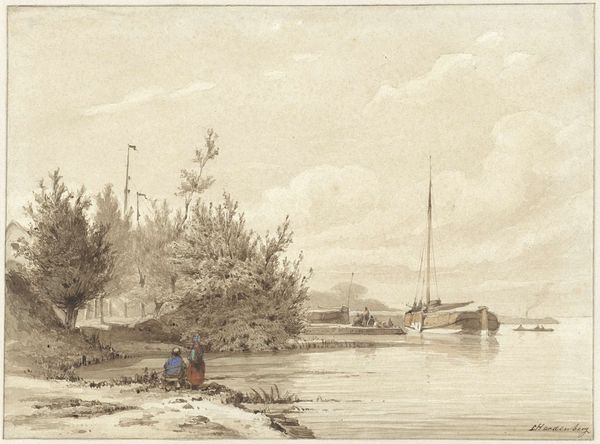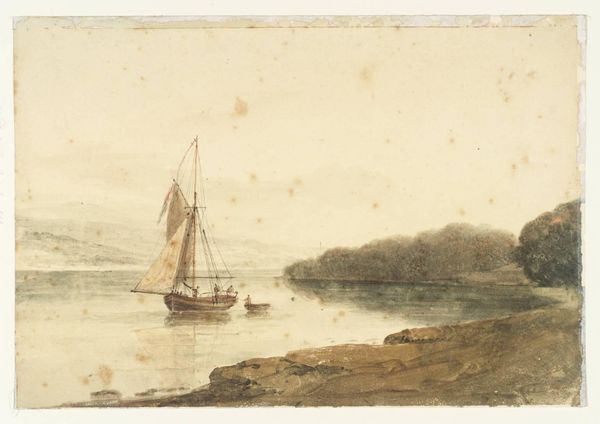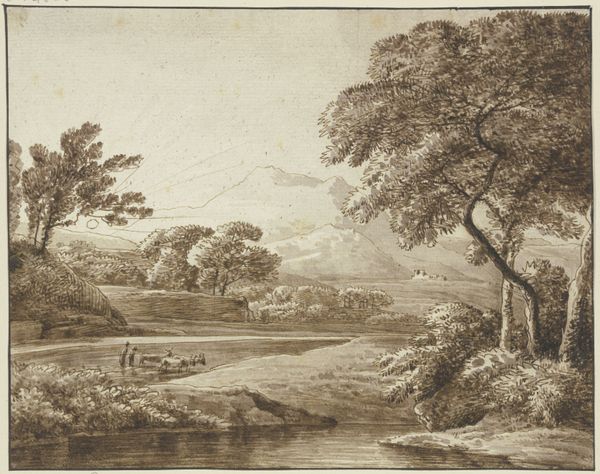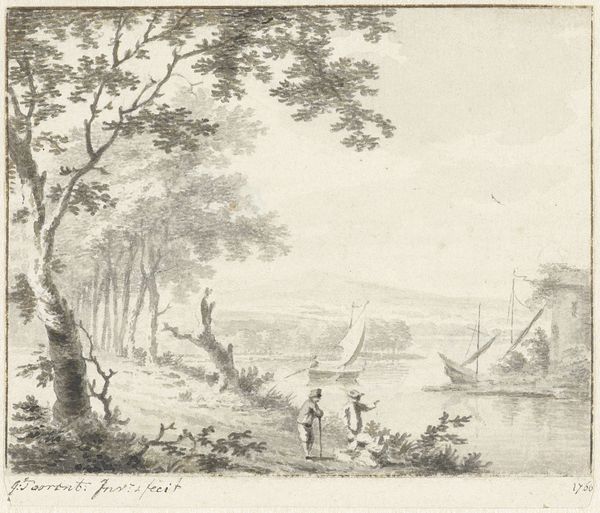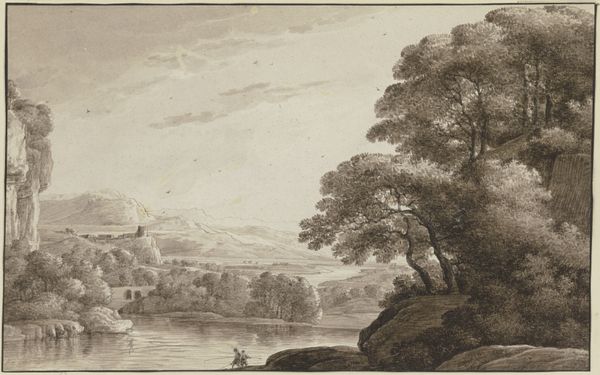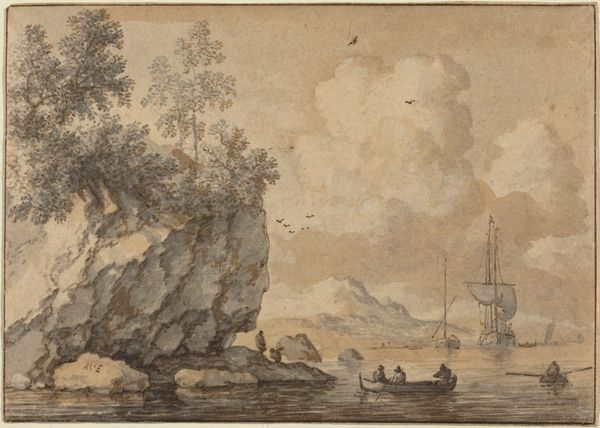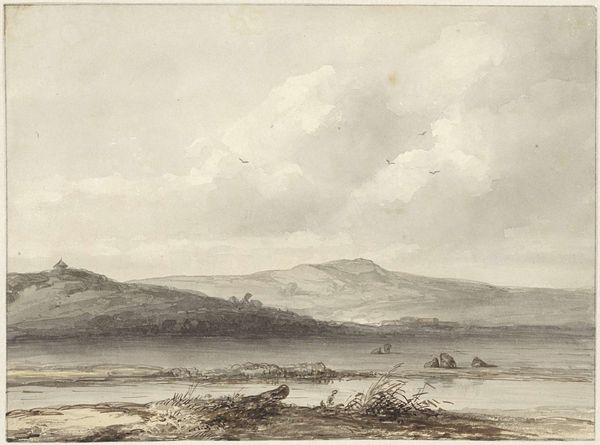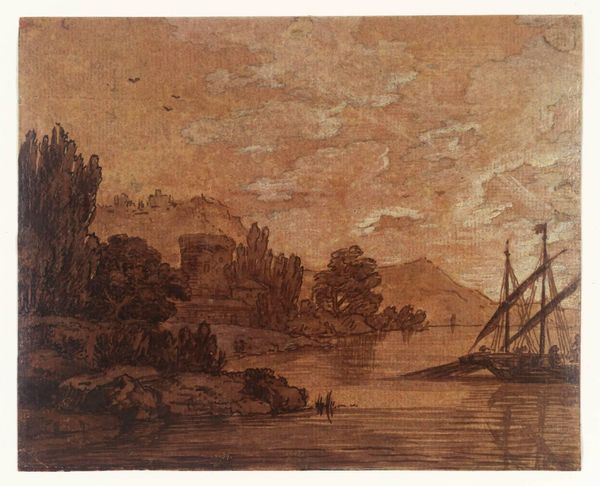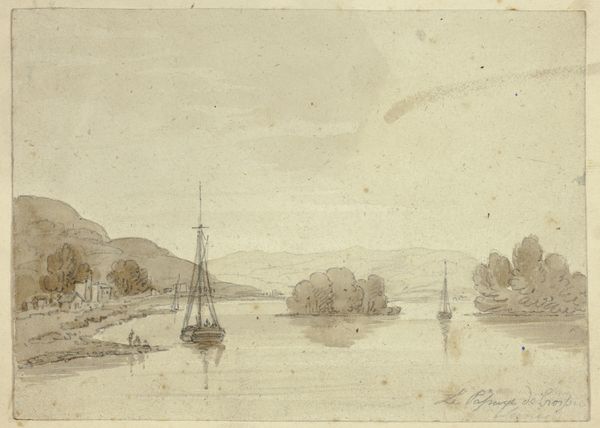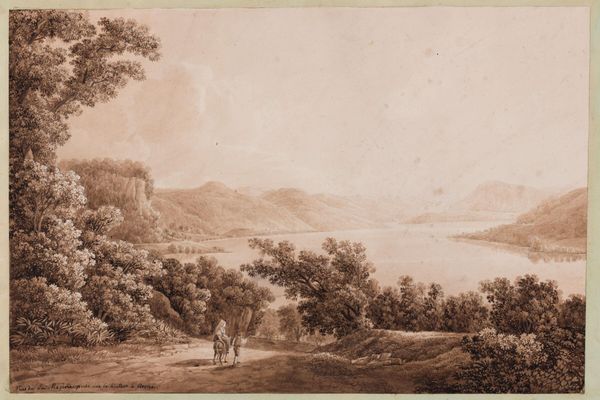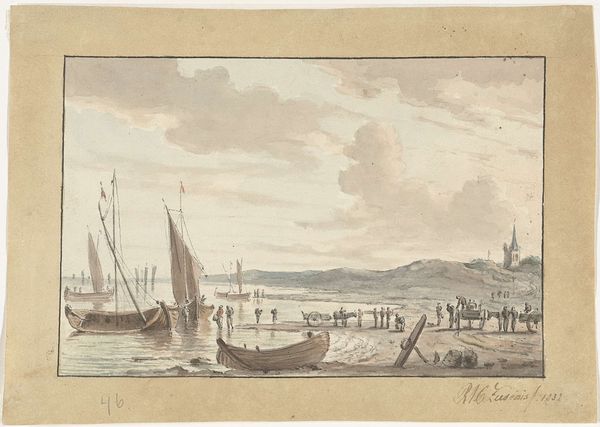
drawing, ink, pen
#
drawing
#
16_19th-century
#
landscape
#
etching
#
ink
#
pen
#
watercolour illustration
#
mixed medium
#
realism
Dimensions: height 75 mm, width 142 mm
Copyright: Rijks Museum: Open Domain
Curator: This is "Rivierlandschap" or "River Landscape" by George Andries Roth, likely created sometime between 1819 and 1887. It's currently held here at the Rijksmuseum. Editor: It has a certain tranquil quality to it, a sort of wistful silence in monochrome. The gray-brown tones give it a somber atmosphere, almost melancholic. Curator: I see what you mean. There is definitely a subtle atmosphere here. It's a mixed-medium drawing created with pen, ink and watercolor techniques. Look how Roth employs light and shadow. The trees on the shore in the mid-ground stand for life and perhaps wisdom through age, leading to the distant promise symbolized by the calm waters. Editor: It’s fascinating how the various materials converge. Roth deftly employs etching as a critical visual ingredient to build dimension with line density. This allows the viewer to read form. It’s this labor that then ascribes the finished composition a greater level of prestige. He's definitely aiming at a realistic representation of a particular locale. Curator: Precisely. It resonates with a desire for naturalism characteristic of the 19th century, attempting to evoke a feeling and connection to the pastoral, or the experience of seeing. Notice also, though perhaps smaller, how two figures occupy the far-left, seeming to gaze towards the body of water ahead of them, beckoning and offering guidance. Editor: Interesting that they’re so understated in their application of labor. However, the artist employs familiar, conventional components within the landscape to reinforce established beliefs in Dutch painting—of humans as industrious and active elements in taming land, rather than prioritizing the majesty of untouched nature. Curator: That’s a clever observation regarding the implied industriousness, I believe there is some element of cultural narrative present here. The landscape isn’t purely about the vista itself, but about imbuing it with a sense of history, and memory passed down through generations, to include some kind of didactic imperative about our connection to place. Editor: Right. Thinking about its historical and economic context brings another angle into view. Curator: Absolutely. Thanks for guiding us through this image, your eye toward technique and context has made for a particularly compelling look at this beautiful landscape. Editor: It's been a pleasure exploring it with you; it is striking to consider how the history of production methods is integral to its cultural impact.
Comments
No comments
Be the first to comment and join the conversation on the ultimate creative platform.
